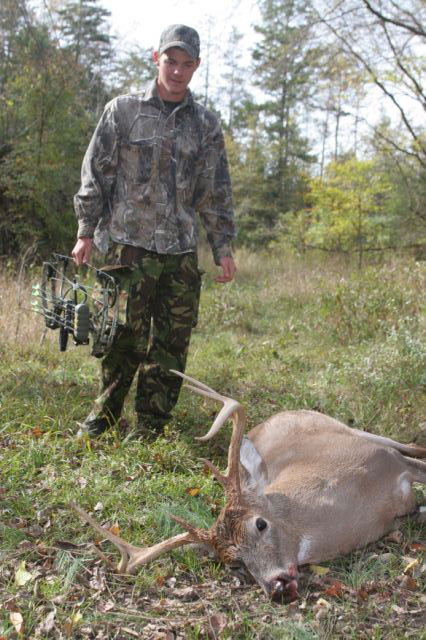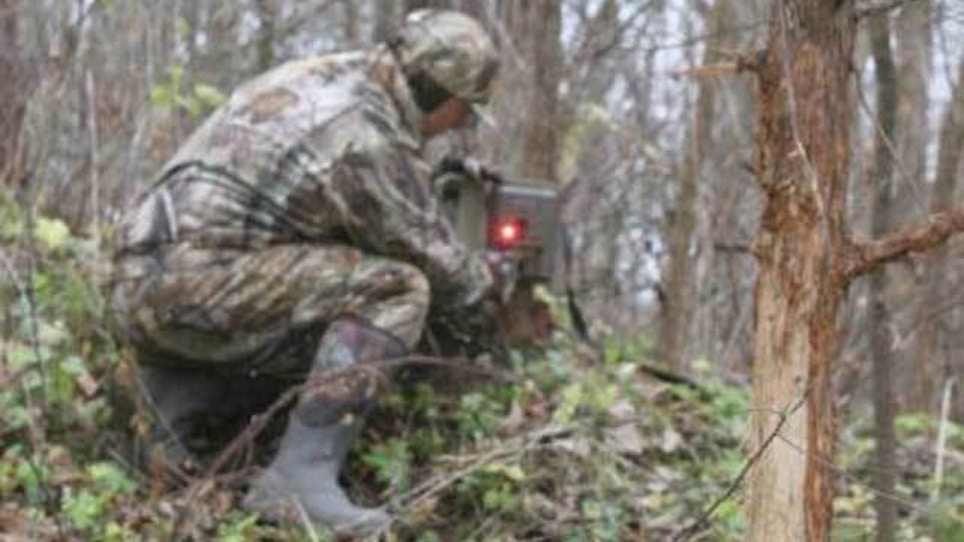Trail cameras have come a long way since they first hit the hunting scene two decades ago. So have the ways hunters use them. What was once a way to see what was using a food plot or bait pile has turned into a high-tech scouting tool that can help hunters not only find trophy bucks, but also track their daily movements and pinpoint their patterns. Trail cameras aren't just tools for taking pictures of deer. They are one of the best tools for scouting whitetail deer without walking through the woods.
 Cross-Reference
Cross-Reference
Nothing will help you home in on a buck's activity better than examining the time stamps on your camera, but there's more to scouting deer than tracking their movements by a clock. The images you capture are just one part of the big picture. For instance, examine weather patterns during the time a buck passed by your camera. Was it cloudy, windy, wet, cold? All of those factors play a role in deer activity, so checking pinpoint weather conditions when you capture a big buck on film can make your whitetail deer hunting a little easier. Once you gather a database of time and weather, you can better understand the daily activity of a particular buck.
Nail 'Em Down
Once you figure out a buck's routine or favorite trails, you can then shift your cameras' location to find out exactly where that buck might be during legal shooting hours. It's one thing to catch him at a feeder or food plot at midnight. Learning where he'll be during legal shooting time can be a bit more challenging. If you have a general idea of his preferred travel routes, place several Moultrie cameras on trails leading to feeding areas. Sooner or later, you'll snap a photo of a big buck in the daylight, giving you one more clue in the trophy buck equation.
Keep A Log
Sorting through all those trail cam photos can be a daunting task, especially if you use numerous cameras. So can remembering where each photo was taken. There are software programs available for tracking whitetail activity that allow you to plug in photo locations, time and other information. A simpler approach is to make notes in a log book of each buck photo and the various data associated with it. Writing the information down helps burn it into your memory. Keep photos in a digital file system and tag each one with certain keywords, including location, time, date and the nickname of each buck.
In-Season Scouting
Don't take your cameras down once the season starts. Hunting pressure can throw bucks off their routine, forcing you to make a change as well. By leaving cameras up, or more specifically, by shifting them to new locations, you can keep tabs on the deer, even if they quit walking under your stand. Place the cameras farther back in the woods and closer to bedding areas. Bucks might still be using the trails around your stand, but they might be using them under the cover of darkness. Or they might have shifted their travel patterns to avoid you. Set them up on trails that were inactive prior to the season or in areas that showed little promise. The big buck you've been chasing might be on the other side of the farm.
Use Plot Mode
Many of Moultrie's game cameras now come with an available plot camera function, which takes photos throughout the day, even if nothing triggers the sensor. That can help you find deer that might not be using a particular trail or a certain section of your food plot. The plot camera function will show you deer on the far side of your plots or those just out of sensor range because the camera is constantly taking photos. The function can be programmed to take a picture at a variety of intervals, and it can be set to start and end at designated times. It doesn't matter if you are buck hunting or chasing does for meat, you'll know what's visiting your fields and food plots throughout the day, even if they don't walk in front of the camera.
Not Just Whitetail Bucks
Trophy mule deer hunters are learning that trail cams are great tools for scouting deer, too. Granted, muleys live in wide-open country and can be far less predictable and patternable than whitetails. They don't always use the same trails. But in some places, a trail camera can be the perfect way to locate and pattern big mule deer. Hang a camera near fence breaks, on trails leading into alfalfa fields and even along well-worn trails in the high country. Not only will that show you what's out there, but it will also help you improve your success.






